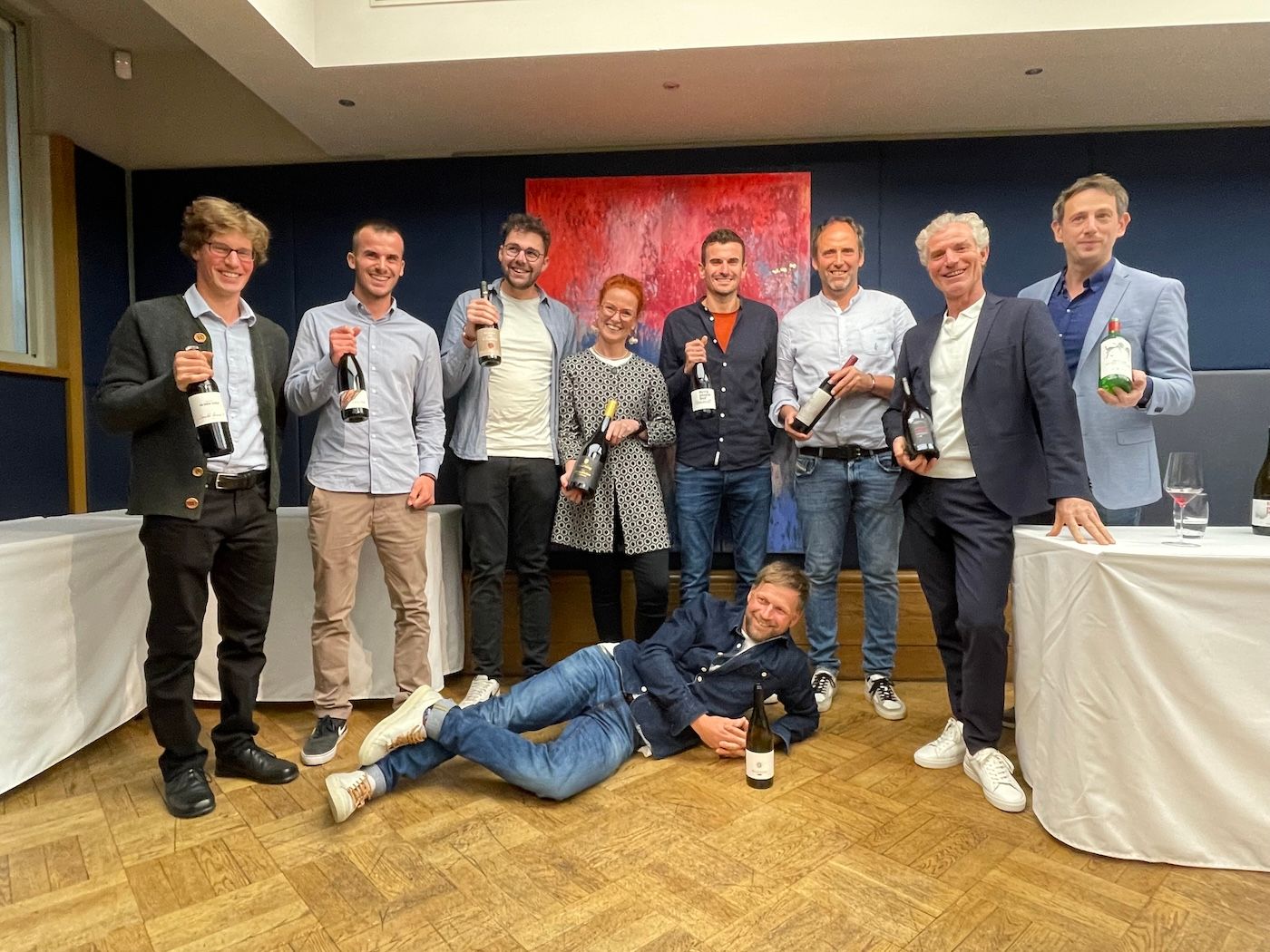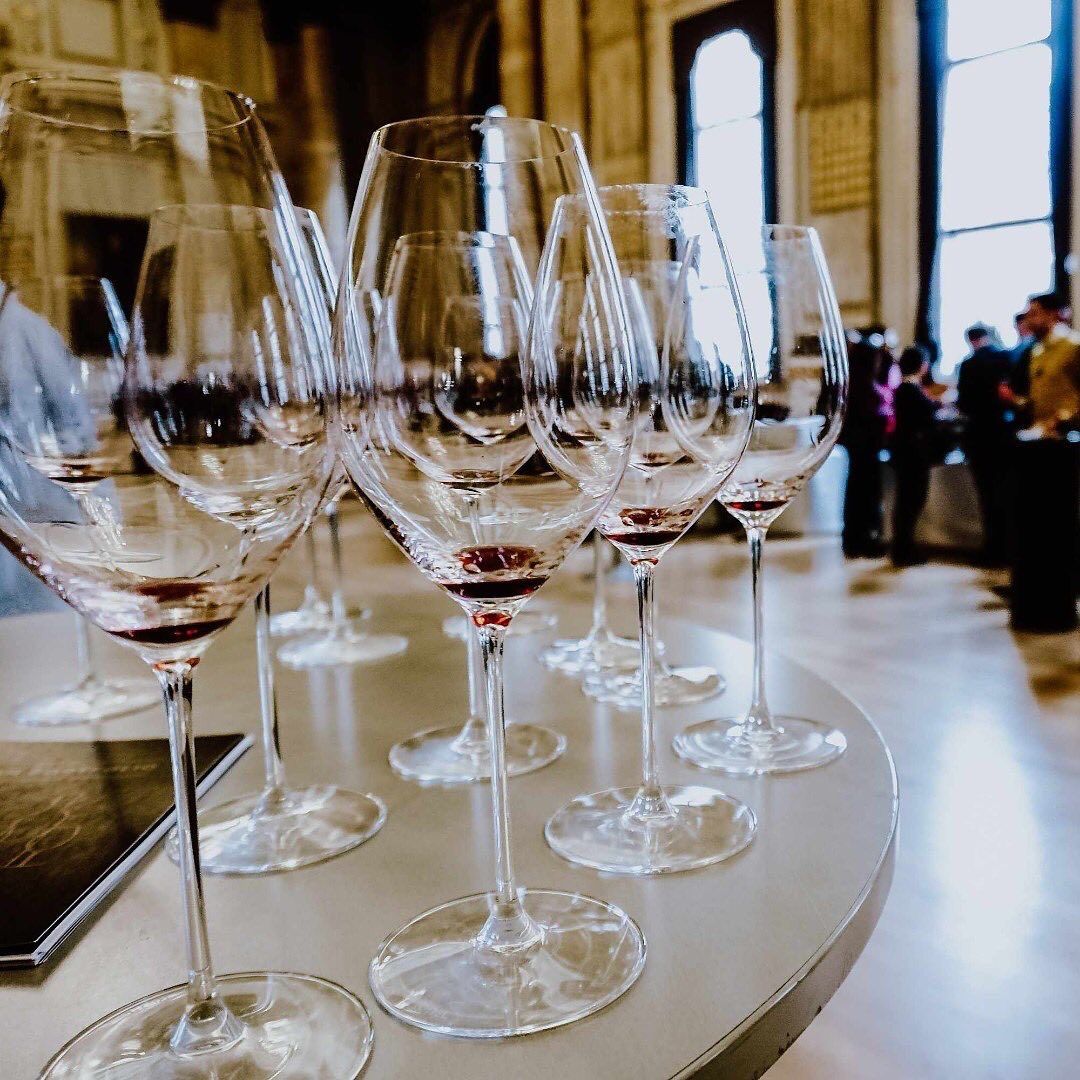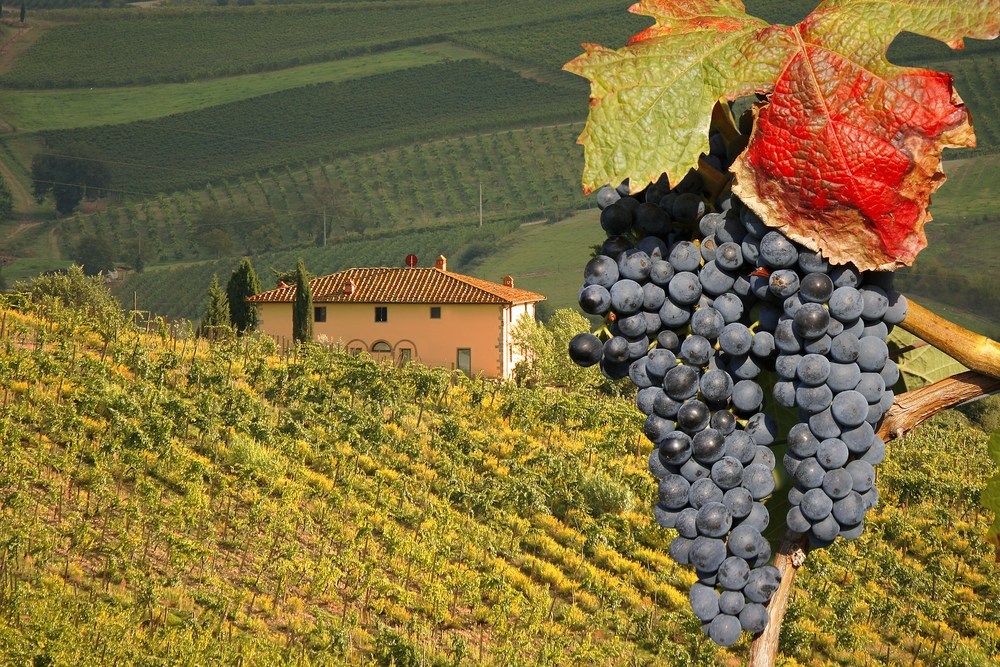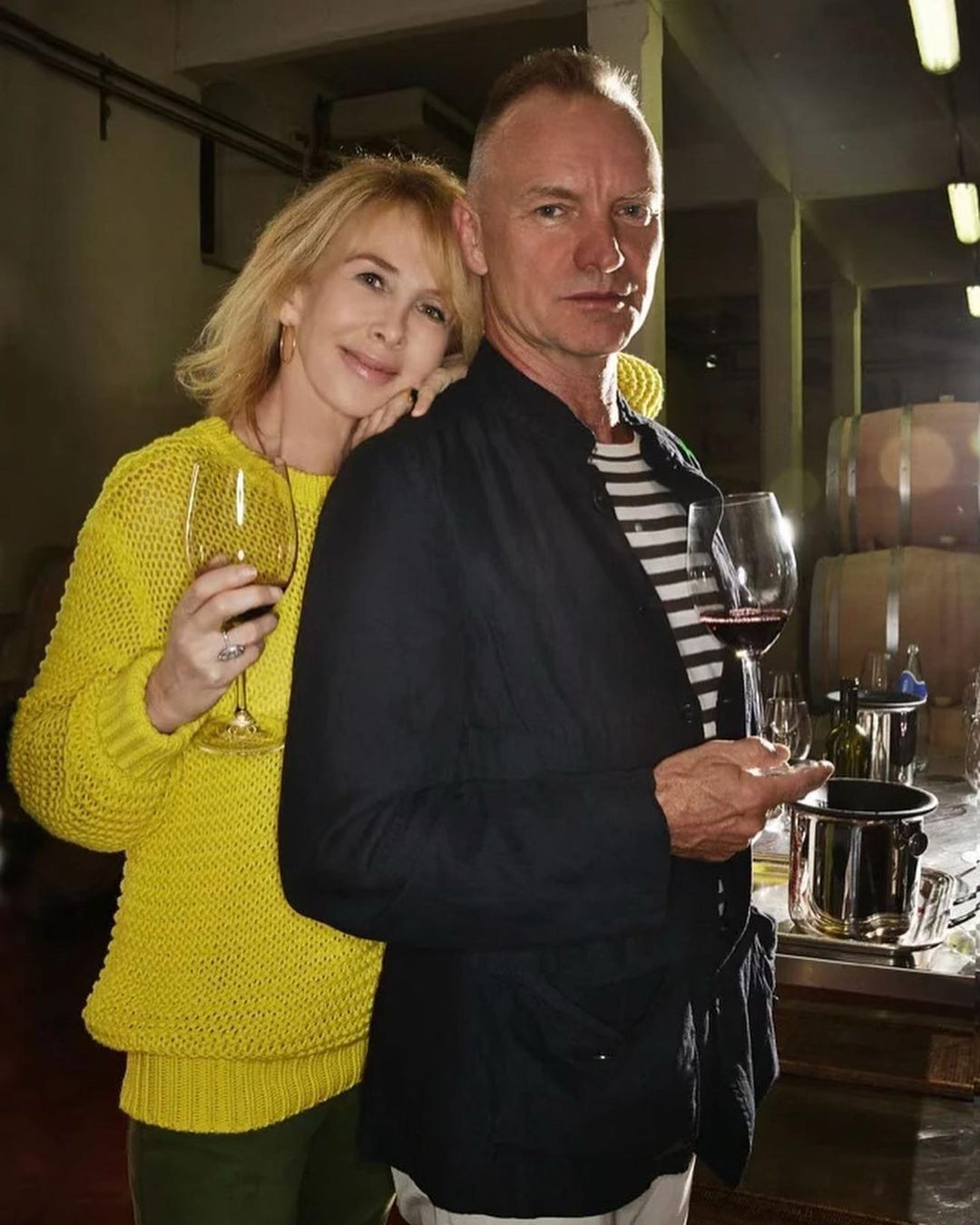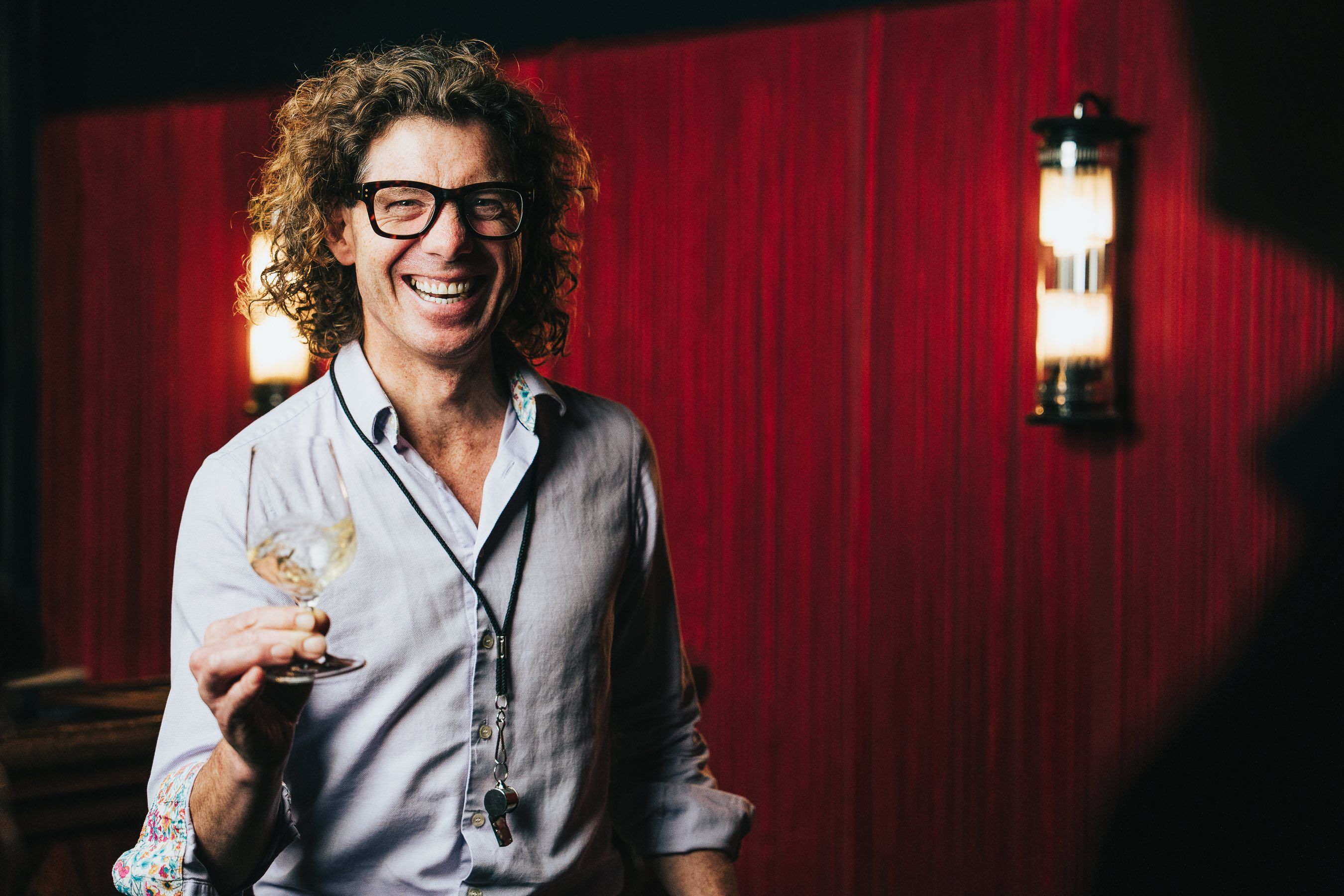San Felice encompasses three Tuscan estates sited in Chianti, Montalcino and Bolgheri with an annual production of around 1.2 million bottles – 1,025,000 bottles of Chianti, 80,000 of Brunello, 40,000 of Rosso do Montalcino and 55,000 of Bolgheri across 20 labels, all made with estate-owned grapes.
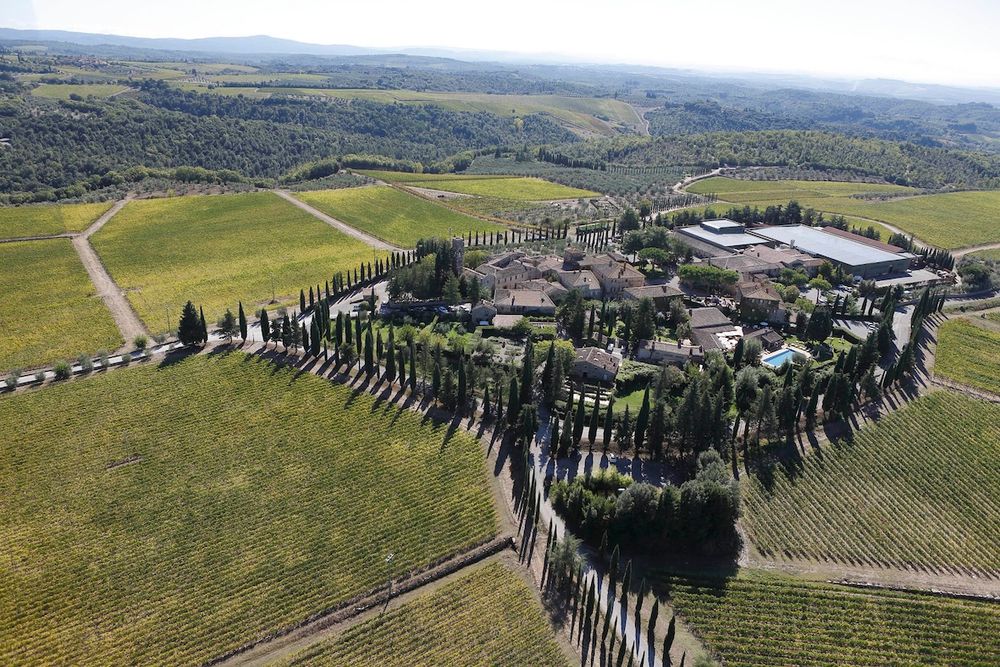
After the Allianz buyout in the 1970s the entire village was converted into a luxury destination including Michelin-star restaurants and 5-star hotel
The Chianti site – an entire restored village close to Sienna – is by far the largest estate with 150 hectares of vines set amongst 685 acres of mainly woodland (all around 400 metres altitude), at Montalcino there’s 23 hectares and 15 hectares in Bolgheri. 82% of the grapes cultivated in Chianti are Sangiovese, the rest made up of a mix of nine indigenous and international varieties.
Leonardo Bellaccini has been the head winemaker here for almost 40 years, driving the innovation that the estate is noted for both in the vineyard and winery.
The new white – In Avane, Toscana IGT 2022
Out of the 150 hectares of vines at the estate just 2-3 ha are white grapes and although San Felice used to produce two white wines with declining yields it has now combined the two to produce In Avane which is a blend of 90% Chardonnay and 10% Semillon and Sauvignon Blanc.
“A mix can produce a more intriguing wine with a different taste and nose compared to a single variety but it is also because production is very limited,” explains Bellaccini.
The 2022 vintage he compares to the 2017, 2020 and 2021 growing seasons where, because the heat and drought started at the beginning of the growing cycle, rather than as a heatwave during summer the overall yield was 30% down.

Leonardo Bellaccini - for San Felice climate change has more negative impacts in the winery than in the vineyard
“The vines responded – they didn’t grow as usual – and had smaller leaves, smaller bunches, and the ripeness process was delayed and the vines sacrificed the yield. In terms of quality the wines do not show jammy or over-ripe qualities experienced in previous vintages, the vines are trying to find an answer to the heat and that answer includes a 30% reduction in yield which obviously affects production.”
Bellaccini says that in order to keep the acidity bright, fresh and the wine in balance they picked the fruit earlier than in any other of his 40 vintages at San Felice.
“To mitigate global warming we are harvesting earlier and earlier, also so the wine is not overloaded with alcohol.”
The fruit was harvested early in the morning then pressed at 4°C for 24 hours with part of the ferment being in steel and the Chardonnay fermented in 15 hectolitre barrels and tonneau to impart a delicate ‘wood accent’.

To taste, the wine has a complex nose – with a floral character coming from the Chardonnay and white fruit coming from the Sauvignon and Semillon, the wood adding a little spiciness. I picked up fresh herbs (fennel), white flowers in what is a pretty and lifted bouquet. In the mouth the wine is fresh, open, fruity and has some decent structure there, fresh acidity, a tannic bite, texture from the wood and a saline grip on the finish that begs another sip. The alcohol is a moderate 12.5% abv. I liked it a lot. Gastronomic and distinctive.
The new red – Chianti Classico Borgo 2022
Also new is Chianti Classico Borgo which is a cuvée made only with the fruit closest to the hamlet (or Borgo) of San Felice – the entire village being restored and turned into a luxury holiday centre complete with five-star hotel and two restaurants (one with a Michelin star) after the Allianz buyout in the 1970s.
The vineyards in this spot are on prime limestone soil which produces quality fruit with decent structure. The wine is primarily Sangiovese with 10% other indigenous varieties the most important of which is Pugnitello.
The Buyer recently ran a feature looking in-depth at this in-vogue grape which you can read here.
In essence Pugnitello is a vigorous grape variety that produces a huge canopy and plentiful shoots but only delivers small, compact bunches (translated it means ‘little fist’) that ends up being 1 kilo of fruit per vine. As such the variety was neglected and ‘put aside’ in the 1950s and 60s because high yield was key at the time.
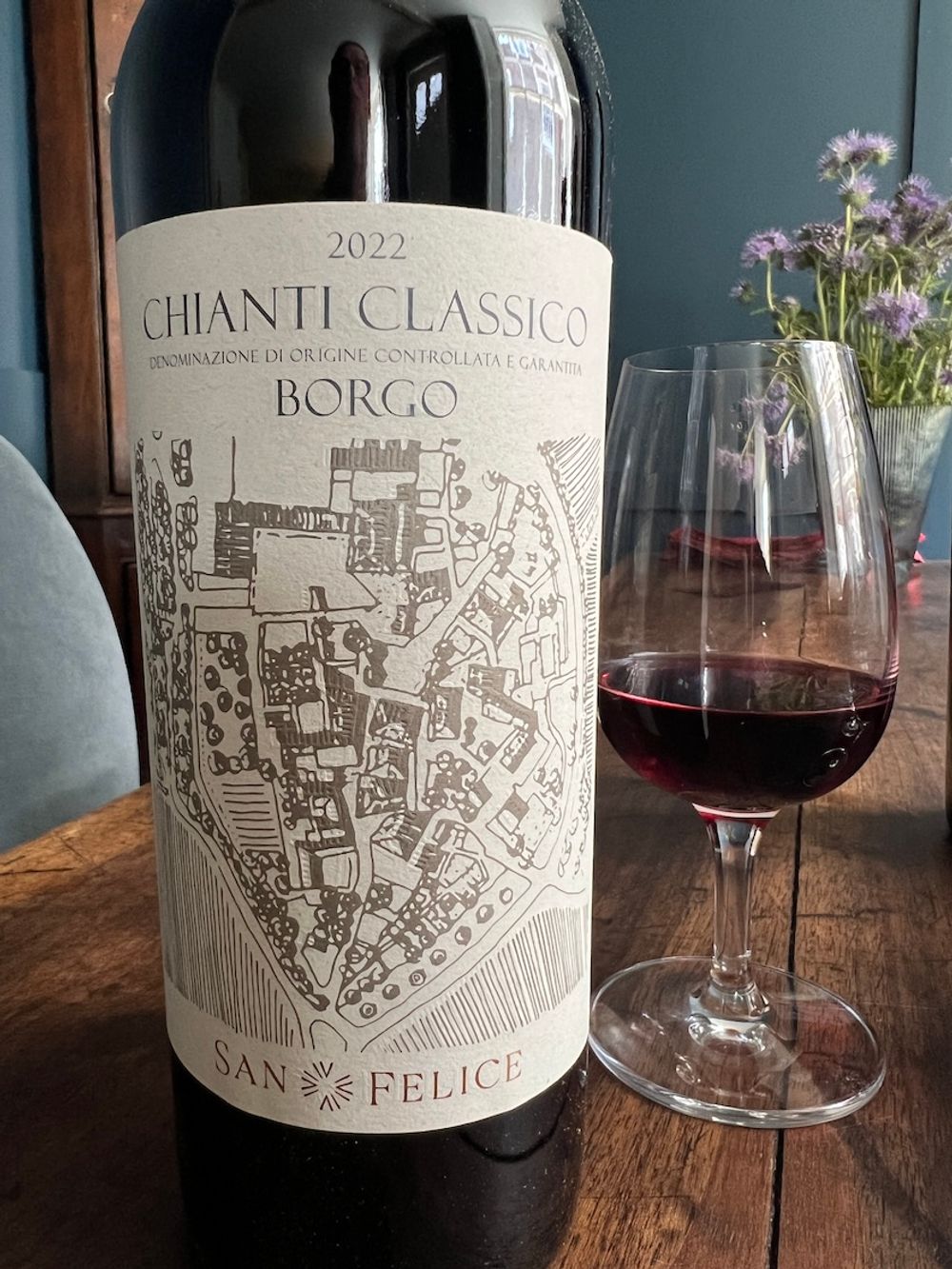
“We want to focus on this variety now because in the cellar it pays back with quality tannins in the mouth and helps Sangiovese achieve its own balance without changing the taste of Sangiovese,” Bellaccini says, “it helps show the appellation and character of Sangiovese.”
Like the In Avane, this is a welcome addition to the portfolio, distinctive and very on-trend. To look at the wine is see-through ruby, with ripe cherries, red liquorice, spice and aromas of aged noble wood. Fresh and light in the mouth you pick up wild, tart cherries, lovely micro-fine tannins, lean with a good grip and nicely gastronomic.

Il Grigio Riserva 2021
The latest vintage of this wine which has been in production since 1968 Bellaccini describes as “beautiful.” 70% of the soil the vines are grown on is limestone with 10% sandstone and the rest sand and silt. The wine spends two years in barrel.
On the nose you get wild cherries, violets and spice. In the mouth the wine is fresh, with a broader mouthfeel than the Borgo, good balance, crispy acidity, complex, with spicy red berries, intense, firm acidity and a real progression in the mouth. Sangiovese obviously needs food but this is surprisingly approachable for such a young wine.
Poggiorosso, Sangiovese and global warming
Before we taste three vintages of the estate’s pinnacle of production the Poggiorosso (2007, 2011 and the latest 2019), Bellaccini prefaces this with a potted history of this wine.
In 1978 the then manager found a little corner of the property – a 2.5-hectare vineyard – that could produce outstanding Sangiovese which until 2011 was blended with other indigenous varieties.
“Since 2011 it was decided to put the Poggiorosso into the Gran Selezione category to send a clear message about Sangiovese and the Gran Selezione concept, which represents a great opportunity to showcase the very best part of each producer or winery.”
Although San Felice could produce 50,000 bottles, because of ‘strict and severe’ production control it only makes 8,000 in the very best vintages, the rest of the fruit declassified into the Chianti Classico. The pruning and canopy management combined leads to tiny yields which are key, Bellaccini believes, to maintain the high quality and age-ability of Sangiovese, a grape he describes as “very demanding… if it is not ripe enough it can be green on the nose, in taste and the tannins, but it is also very easy to go overripe.”
His team are attempting to increase yields from a “ridiculously low” 1 kilo per vine to 1.5 kilos. “With the weather today 1 kilo might not be enough, 1.5 kilos will be the goal, that puts together concentration, freshness and sustainability – with less than one kilo it is difficult to be sustainable.”
“In the 1980s and 90s we used to remove the leaves to expose the bunches to sunlight but now we do the opposite especially on the West side of the canopy (the sun of the afternoon). We also keep the low part of the leaves... this also helps because the oldest leaves produce less sugar and bring more structure – this is what we are looking for – more concentration without being overloaded.”
Bellaccini says that in the vineyard global warming makes his life a little easier because the healthy, dry conditions result in five or six great vintages every decade as oppose to two every ten years.
“It is more complicated in the cellar, however. Compared to the 90s – because the higher concentration in sugar makes fermentation slower, it makes life tough for the yeast – the activity declines dramatically – which means that bad yeast can start to take over and create off-flavours in the wine… today the big challenge is in the cellar.”

Poggiorosso Chianti Classico Gran Selezione 2019
Bellaccini describes 2019 as a normal vintage with sunny weather but a season without extra heat or drought producing a good yield. “The result? a wine of beautiful balance in the nose and mouth, which has the potential to be a great vintage in 10-20 years.”
To look at the new wine is deep, opaque ruby red. The nose is complex, inviting, ripe blackberry, dried plum, a hint of white coconut flesh, in the mouth the wine makes its stature immediately felt – fresh, concentrated fruit with perfect balance and depth – fine-boned tannins, bright acidity, a touch of black liquorice and blood orange on the long finish. Really impressive, elegant, immense and with a long life ahead of it.
One of the only key differences to the winemaking is that the team has reduced the number of days of maceration from 25-30 days to 15-20 on account of the fruit being riper and the extraction therefore much faster.
Before the 2019 we taste two older vintages.
Poggiorosso Chianti Classico Riserva 2007
Evolved, ox blood colour with bricking on edges; Complex nose: dried fruit, figs, black cherry conserve, savoury and spicy notes of sun-dried tomato, tobacco, cloves.
Mouth-filling but still fresh with lovely balance – tannins are more overt and grainy, dry finish with grip. In really good shape.
Poggiorosso Chianti Classico Riserva 2011
An unique vintage which he compared to 2010 and 2015 – the beginning of summer was relatively normal, the heat arriving at the end of the season so the ripeness started regularly – there were heatwaves throughout August and September that gave the wine concentration.
Blood red, sweet, ripe, intense red and black fruit, pastry notes. In the mouth the wine is full, round, with ripe, fine-grained tannins cloaked by the opulence of the fruit. Good length with nice persistence of fruit flavours. Less complex compared to the 2007 – but the mouth is full and round and much more fruity. Nice freshness and good backbone to the wine that keeps it all in check. Quite unusual to have a Sangiovese so rich and soft but showing very well.
That’s not all folks!
From September/ October San Felice will be releasing another two Gran Seleziones. All three estates will have changed to organic protocol – certified sustainable and will be certified organic from next year. They are currently managing vineyards under Regenerative Agriculture practices and actively involved in reducing impact, in the winery and in the Borgo hotel, all water is purified and recycled. “You have to be dynamic,” says Bellaccini signing off.

